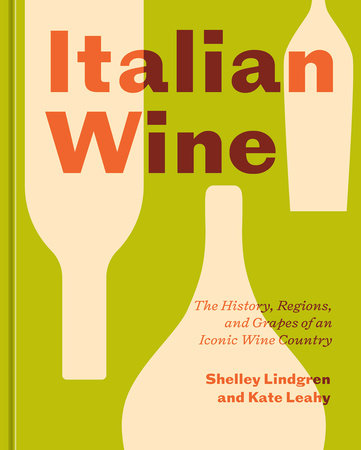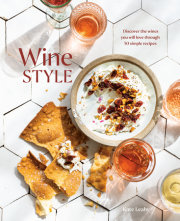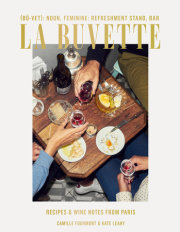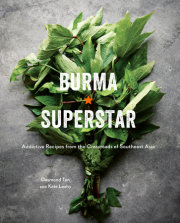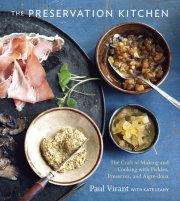IntroductionAn overhead lamp lit the cellar like a poker den, illuminating a table surrounded by a dozen men. One wore a motorcycle jacket, others had just come from the farm, and a few looked dressed for the office. They passed around a box of red cherries as they talked, collecting pits into neat piles in front of them. One man mentioned that his son had returned home after studying winemaking in France; another brought up the weather, which was too hot for June. The cellar was cool, its stone walls lined with glass jars of soil taken from vineyards around the world: some light, some rocky, some nearly black. Upstairs, the ground floor baked under the afternoon sun as temperatures soared past 100°F (37.7°C). Climate change was playing its hand.
“
Benvenuti, benvenuti!” Massimo Alois stood at the head of the table among fellow members of Vitica, the consortium for Caserta winemakers. As talk died down, he introduced us, two road-weary Americans who had arrived a couple of hours late after taking a wrong turn somewhere between Campobasso and Caserta. More
benvenutis filled the air. A few gruff faces softened. One winemaker handed us olive oil from his farm; another passed us the box of cherries. In the spirit of introductions, Massimo popped open a bottle of Prima Gioia, a sparkling wine from Masseria Piccirillo made with the same technique employed in Champagne. Carmine Piccirillo, who brought the bottle, grinned. The idea to make it came from his son, Giovanni, the one who had studied in France, Carmine explained. The pale wine’s delicate bubbles revived our flagging energy. “
Saluti,” we said, raising our glasses above the cherry pits.
Pallagrello Bianco, the grape used in the wine, once grew in the vineyards of the Caserta Royal Palace. By the twentieth century, the grape was nearly ancient history until a handful of enthusiasts rehabilitated the few remaining vines, along with a local grape called Casavecchia. Today, Pallagrello Bianco, Pallagrello Nero, and Casavecchia are common around Caserta, though it would be tough to find the grapes growing anywhere else in the world. Cesare Avenia, the president of Vitica, started his winery, Il Verro, in the early 2000s to work with local vines. He grows both Pallagrellos and Casavecchia as well as Coda di Pecora, a grape that remains obscure—even by Italian standards. To unlock the potential of these varieties, the members of Vitica are working together to lift the reputation of their winemaking corner of Italy—a high tide raising all boats.
North of Naples, the province of Caserta is only one pocket of winemaking in a country loaded with them. After the Second World War, most grape farmers around Caserta grew the crop for bulk production, keeping some of the harvest to make wine for themselves. Volume was more important than quality, so they chose grapes that were easier to grow and sell. Native grapes that weren’t well known outside their local areas or proved finicky in the vineyard were pulled out or abandoned. Yet in many cases, the vines survived, either through neglect or because a family became attached to the local vine and kept it around to make wine for themselves. The same thing happened all over Italy, and many of the country’s most renowned winemakers came from families that grew such grapes and made wine simply to have something to drink throughout the year.
While wine has been made and traded in Italy since before the time of the Greeks and Romans, Italian wine as we know it today is a relatively new idea. In his seminal 1980 book
Vino, Burton Anderson described his first trip to Italy in the 1950s, where he drank local wines poured from reusable bottles in nearly every region. What he tasted was simple but good, and when he came across a bad bottle, it was so inexpensive that he couldn’t get upset about it. Starting around the 1960s, Italian wine began to change rapidly, and in some places, it became part of large-scale businesses aided by technological advancements in bottling and temperature control. Cheap Chianti, Verdicchio in fish- and amphorashaped bottles, and sweet Lambrusco poured into the United States.
At the same time, Italian winemakers started to think through ways to bring attention to the country’s best bottles, formalizing a quality scale modeled after the system used in France. Italian wines made in a certain place with approved grapes and techniques were granted a quality designation, setting them apart from mass-produced wines. What came to be called the DOC system (page 24) soon became recognized for all its faults. Why was this wine elevated to a higher status over that one? Why was this grape allowed in this wine but not in that one? Some of the most famous Italian wines of the twentieth century, like Sassicaia from Tuscany, skirted DOC regulations by labeling their premium product
vino da tavola (table wine). Yet in between cheap wine and rarified bottles, most Italians were drinking whatever was made around their town. Even today, Italian wine is local wine, with each region making it in their own way.
The biggest shift in the past three decades has been the focus on native grapes. While wine grapes likely originated in Western Asia, vines spread and mutated across Italy. There are more than 590 official grapes in the Italian government database, but the true number could easily be double the official count. It’s Italy’s grape biodiversity that makes it possible to make wines like the sparkling Pallagrello Bianco we tasted with the members of Vitica.
In 2007, on our first research trip together, we arrived in Naples with flip phones and driving directions printed out from MapQuest. While the trip focused on a handful of regions in southern Italy—we were researching the wine chapters of our cookbook
A16: Food + Wine—it was long enough to visit an experimental vineyard in Cirò, meet families in Avellino transitioning from being farmers who sold grapes to winemakers, and encounter professionals who left careers in Milan and returned home to make wine with the grapes their grandparents grew. Along the way, we bought bags of blood oranges and sampled fresh ricotta and mozzarella in nearly every town we visited.
Early in the trip, we met Bruno De Conciliis, a winemaker from Cilento in the southern part of Campania, the region surrounding Naples. We told Bruno that we would drive from Naples to his winery, but the idea of two Americans driving through the city worried him. To Bruno, driving in Naples requires staying liquid: a driver shifts to the left or right and everyone else shifts, too, without tapping the brakes. The same isn’t so for Americans, he said. We drive like a solid mass, and if we don’t stay between the lines, we cause a collision. To prevent disaster, he took the train into Naples and met us at the rental agency, where we gladly handed him the keys to our beat-up silver Opel. As he drove, he told us how he pumped jazz into the cellar to help his wines relax. The jazz may have been more for his benefit, but it fit with Bruno’s goal to create wine in a personal way, not like wineries that made their wine taste the same, no matter the year. “If you force a wine in a particular direction, it will become angry with you,” he said. “You lose its life if you control it too much. I don’t want to make Coca-Cola.”
The reality is that Italy makes about a sixth of the wine in the world, and there are not enough Italians to drink it all. Fortunately, Italy has America—30 percent of all imported wine in the United States is Italian. A lot of Italian wine also goes to the United Kingdom and Germany. In fact, Italian wine reaches nearly every continent (we’re not sure about Antarctica, but maybe it’s there, too). If gaining a foothold in the export market is essential for survival for many wineries, making “Coca-Cola” won’t cut it. The breakthroughs today aren’t with cellar technology, like they were in the 1960s, ’70s, and ’80s. Instead, it’s about returning to the old ways of making wine while learning how best to showcase the grapes and land in a glass.
Copyright © 2023 by Shelley Lindgren and Kate Leahy. All rights reserved. No part of this excerpt may be reproduced or reprinted without permission in writing from the publisher.





